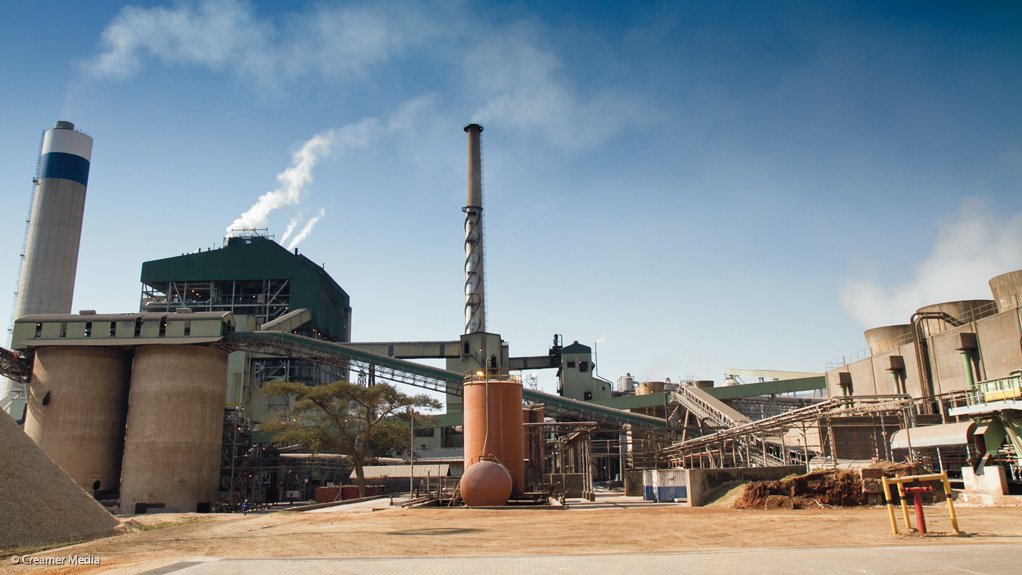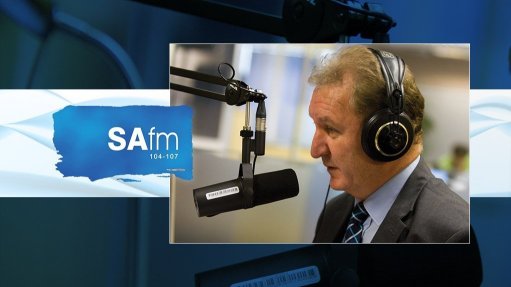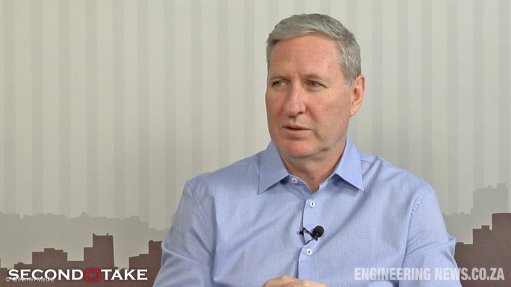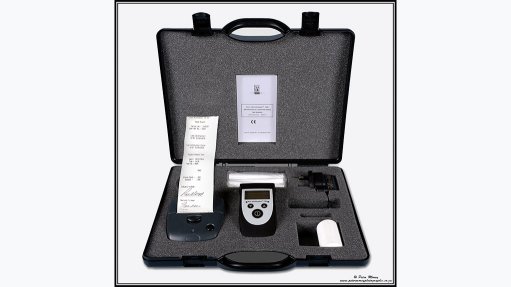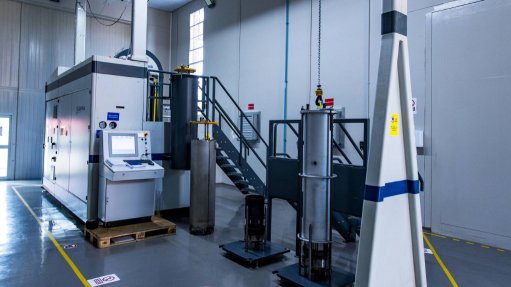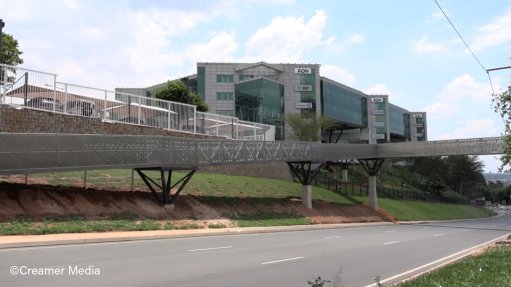Sappi delivers improved quarterly performance across all segments
Although global macroeconomic conditions were unfavourable during the first quarter of paper manufacturer Sappi’s 2025 financial year, the company reported improved year-on-year profitability across all segments, supported by cost-savings, operational efficiency gains and higher dissolving pulp (DP) selling prices and sales volumes, combined with improved packaging and speciality papers sales volumes.
“Despite continued challenging global macroeconomic conditions and weak paper markets, Sappi delivered adjusted earnings before interest, taxes, depreciation and amortisation (Ebitda) of $203-million, which was ahead of expectations and substantially above last year,” Sappi CEO Steve Binnie said on February 5.
For comparison, the adjusted Ebitda for the same period in the 2024 financial year was $130-million – 56% lower.
Binnie said that, against the backdrop of global macroeconomic headwinds, weak consumer spending and overcapacity in paper markets, the company’s strategic capacity rationalisation and cost-saving initiatives delivered positive outcomes.
This resulted in Sappi reporting a profit of $70-million for the three-month period ended December 31, compared with a loss of $126-million for the quarter ended December 31, 2023.
The company ended the quarter with net debt of a little more than $1.4-billion, up from more than $1.2-billion in the first quarter of the 2024 financial year.
The pulp segment delivered a robust performance with profitability significantly above that of last year. Demand for DP continued to be strong despite the Chinese viscose staple fibre (VSF) market entering the seasonally slow period ahead of the Chinese Lunar New Year.
However, VSF industry operating rates remained high, and inventories in the value chain continued to trend below historical levels, Binnie explained.
The profitability of Sappi’s packaging and speciality papers segment improved compared with the prior year, albeit from a low base. Sales volumes increased by 14% owing to a significant recovery in North American paperboard sales volumes.
Binnie noted that recovery in Europe continued to lag, driven by weak consumer sentiment and overcapacity. However, in South Africa, underlying demand was satisfactory within the context of the typical low seasonal activity in fruit export markets in the first quarter.
The profitability of the graphic papers segment improved year-on-year, driven primarily by cost savings related to operational efficiency improvements. Sales volumes declined by 3% compared with the prior comparable quarter as market demand resumed its historical decline following the volatility observed over the last two years, Binnie explained.
Selling prices were resilient, despite significant supply overcapacity and low industry operating rates, which supported healthy Ebitda margins for the segment.
“Notwithstanding relatively stable underlying market conditions and after taking into account the $45-million negative impact of the annual maintenance shuts at the Ngodwana and Saiccor mills in South Africa, along with a 70-day shut to complete the Somerset Mill Paper Machine 2 (PM2) project [in the US], we anticipate that adjusted Ebitda for the second quarter will be below that of the first quarter,” Binnie said.
Sappi reported that the performance of the European region improved relative to last year, benefiting from savings related to the strategic rationalisation of the graphic paper assets and higher selling prices. For graphic papers, the reduced sales volumes were offset by higher selling prices and improved capacity use.
In packaging papers, underlying demand remained muted owing to weak consumer sentiment and overcapacity, Binnie said.
However, for speciality papers, particularly label grades, sales volumes and selling prices were higher year-on-year. Overall fixed costs were down 12% owing to personnel savings associated with the closure and restructuring actions within the region.
The North American region delivered another strong performance for the quarter, with adjusted Ebitda substantially higher than in the first quarter of the 2024 financial year.
Binnie said this success was largely driven by improved sales volumes, which were up 12% year-on-year for graphic paper and up 38% year-on-year for packaging and speciality paper. This boosted operational efficiencies. The absence of the scheduled maintenance shut at the Cloquet Mill, in the US, that occurred during the comparative period was also helpful.
Binnie said the improved year-on-year profitability in South Africa was primarily driven by reduced costs and higher DP sales prices and volumes. The sales volumes and cost savings were owing to improved operational efficiencies and the absence of maintenance shuts at the Saiccor and Ngodwana mills in the current period compared with the previous year.
Containerboard sales volumes were in line with last year, and underlying containerboard demand in local markets remained steady. Demand for office paper improved relative to last year, driven by good back-to-school seasonal demand. Other paper categories struggled in a weak domestic economy.
Adjusted earnings a share for the quarter were $0.14, substantially above the $0.05 in the prior year and reflective of the improved operating performance. Special items reduced earnings by $11-million and were mainly related to the final write-offs for the mill closures of last year and fire-damaged timber, Binnie explained.
Meanwhile, the forestry fair value price adjustment for the quarter was a loss of $1-million.
LOOKING AHEAD
Binnie said the underlying demand for DP remained strong, supported by high operating rates in the VSF industry. However, Sappi expected the seasonal slowdown in China's textile industry during the Lunar New Year celebrations to apply short-term pressure to DP pricing in the second quarter.
“Packaging and speciality papers markets in North America and South Africa are expected to remain stable with good demand from customers. European markets remain weak, and recovery is taking longer,” he said.
Sappi reported that graphic papers markets hadnormalised following a prolonged destocking cycle, and demand across all regions had resumed its historical decline.
However, overcapacity remains a significant headwind for the industry, particularly in Europe. Sappi's strategic focus for this segment is to maximise market share and proactively manage capacity use as it transfers graphic papers sales from its Somerset Mill PM2 to alternate assets.
Binnie pointed out that challenging global macroeconomic conditions, persistent geopolitical tensions and uncertainties surrounding US trade tariffs pose both risks and potential opportunities to the business.
In this environment, Sappi’s strategic focus remains firmly on cost savings to safeguard its competitive advantage.
The Somerset Mill PM2 will be shut for about 70 days in the second quarter as Sappi completes the conversion and expansion to paperboard. The machine is expected to start commissioning in April.
The paperboard product mix will shift with the commercial ramp-up of the machine, initially increasing the proportion of sales to the lower-margin food service market. The project will adversely impact on second-quarter earnings by about $21-million.
“Global paper and pulp markets continue to be oversupplied and downstream paper demand recovery is slow. Prices have stabilised in recent weeks, and market analysts are forecasting that we are approaching the trough in the cycle. We anticipate that our paper business will continue to benefit from the lower pulp input costs in the second quarter,” Binnie said.
Yearly maintenance shuts are also scheduled for the Ngodwana and Saiccor mills in the second quarter. These occurred in the first quarter of last year. This would have a negative impact on earnings of about $45-million, Binnie warned, adding that the company anticipated that the forestry fair value price adjustment would be negative in the second quarter owing to rising fuel costs.
Sappi's capital expenditure forecast for the 2025 financial year has risen from $500-million to about $525-million as the company has made additional contingency provisions to account for increased labour costs associated with the Somerset Mill PM2 conversion and expansion project.
Article Enquiry
Email Article
Save Article
Feedback
To advertise email advertising@creamermedia.co.za or click here
Comments
Press Office
Announcements
What's On
Subscribe to improve your user experience...
Option 1 (equivalent of R125 a month):
Receive a weekly copy of Creamer Media's Engineering News & Mining Weekly magazine
(print copy for those in South Africa and e-magazine for those outside of South Africa)
Receive daily email newsletters
Access to full search results
Access archive of magazine back copies
Access to Projects in Progress
Access to ONE Research Report of your choice in PDF format
Option 2 (equivalent of R375 a month):
All benefits from Option 1
PLUS
Access to Creamer Media's Research Channel Africa for ALL Research Reports, in PDF format, on various industrial and mining sectors
including Electricity; Water; Energy Transition; Hydrogen; Roads, Rail and Ports; Coal; Gold; Platinum; Battery Metals; etc.
Already a subscriber?
Forgotten your password?
Receive weekly copy of Creamer Media's Engineering News & Mining Weekly magazine (print copy for those in South Africa and e-magazine for those outside of South Africa)
➕
Recieve daily email newsletters
➕
Access to full search results
➕
Access archive of magazine back copies
➕
Access to Projects in Progress
➕
Access to ONE Research Report of your choice in PDF format
RESEARCH CHANNEL AFRICA
R4500 (equivalent of R375 a month)
SUBSCRIBEAll benefits from Option 1
➕
Access to Creamer Media's Research Channel Africa for ALL Research Reports on various industrial and mining sectors, in PDF format, including on:
Electricity
➕
Water
➕
Energy Transition
➕
Hydrogen
➕
Roads, Rail and Ports
➕
Coal
➕
Gold
➕
Platinum
➕
Battery Metals
➕
etc.
Receive all benefits from Option 1 or Option 2 delivered to numerous people at your company
➕
Multiple User names and Passwords for simultaneous log-ins
➕
Intranet integration access to all in your organisation



